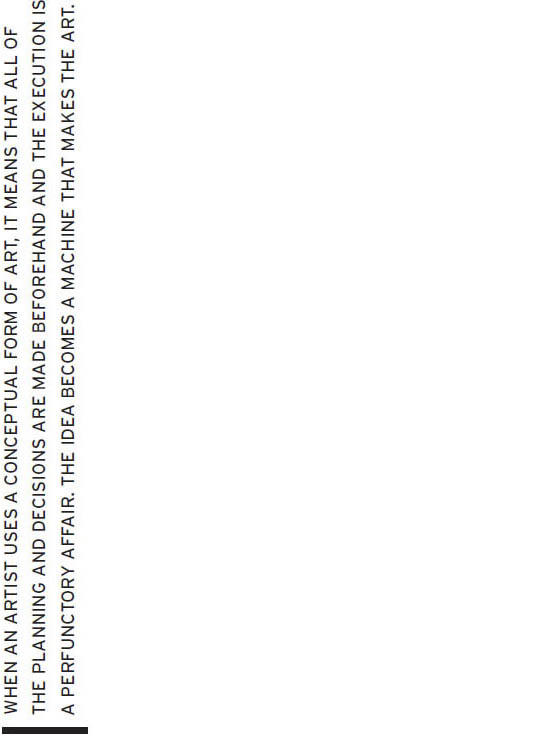DOING WALL DRAWINGS
SOL LEWITT | 1971
The artist conceives and plans the wall drawing. It is realized by draftsmen (the artist can act as his own draftsman); the plan (written, spoken, or drawn) is interpreted by the draftsman.
There are decisions that the draftsman makes, within the plan, as part of the plan. Each individual, being unique, if given the same instructions would understand them differently and would carry them out differently.
The artist must allow various interpretations of his plan. The draftsman perceives the artist’s plan, then reorders it to his experience and understanding.
The draftsman’s contributions are unforeseen by the artist, even if he, the artist, is the draftsman. Even if the same draftsman followed the same plan twice, there would be two different works of art. No one can do the same thing twice.
The artist and the draftsman become collaborators in making the art.
Each person draws a line differently and each person understands words differently.
Neither lines nor words are ideas, they are the means by which ideas are conveyed.
The wall drawing is the artist’s art, as long as the plan is not violated. If it is, then the draftsman becomes the artist and the drawing would be his work of art, but art that is a parody of the original concept.
The draftsman may make errors in following the plan. All wall drawings contain errors, they are part of the work.
The plan exists as an idea but needs to be put into its optimum form. Ideas of wall drawings alone are contradictions of the idea of wall drawings.
The explicit plan should accompany the finished wall drawing. They are of equal importance.

